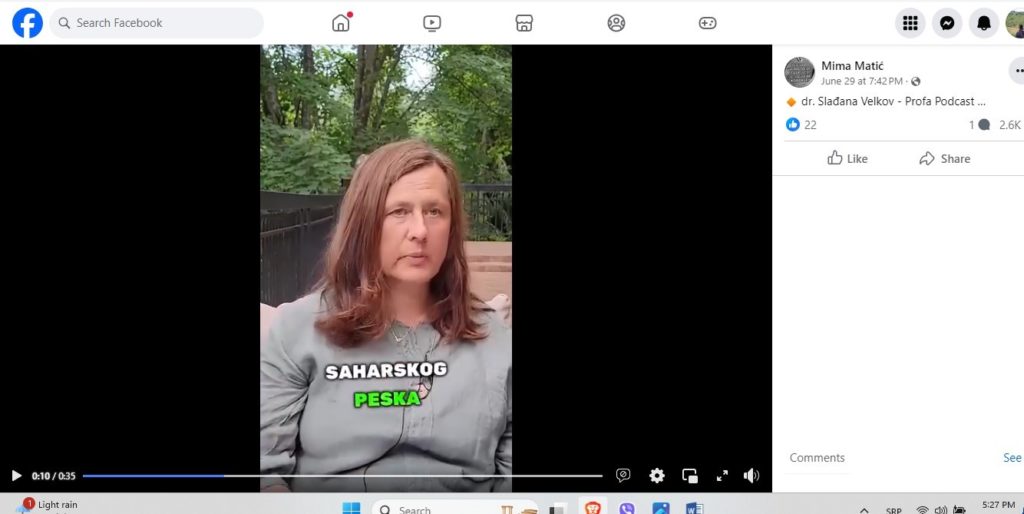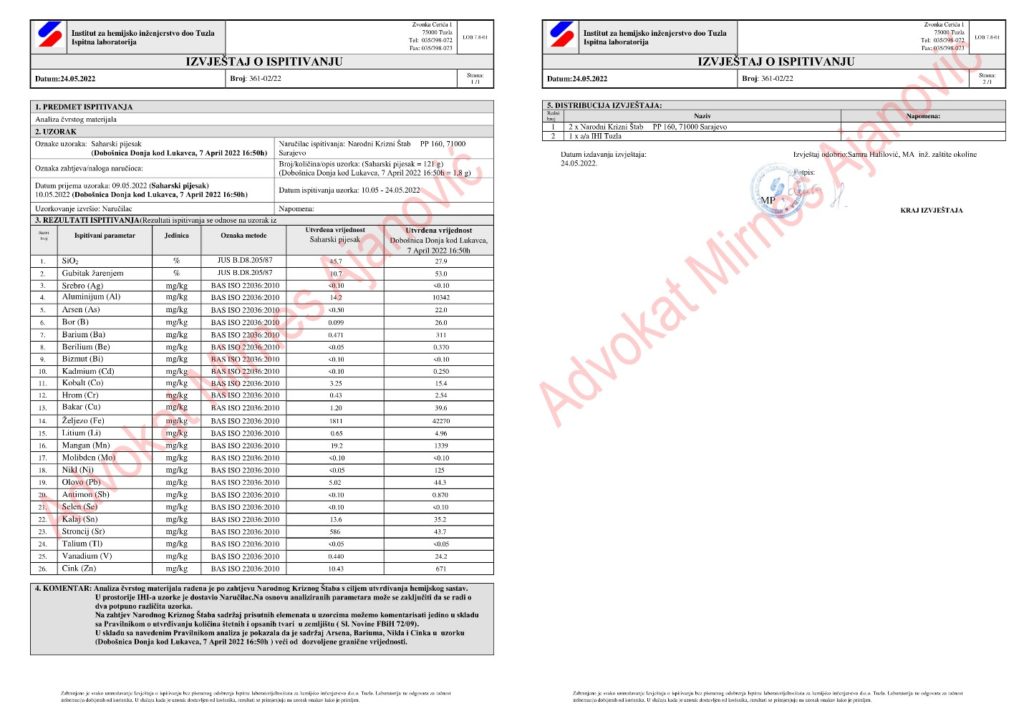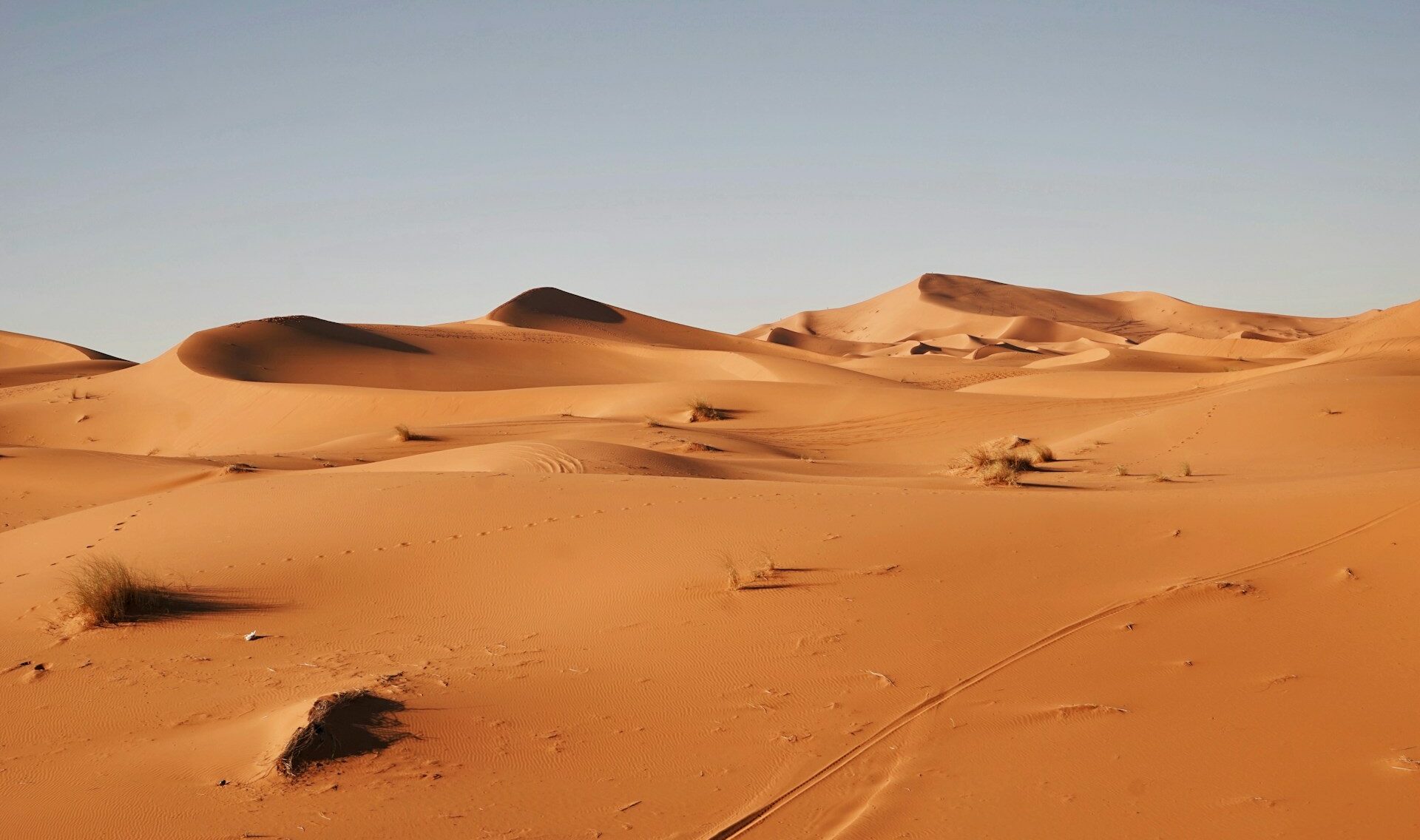Original article (in Montenegrin) was published on 3/7/2024; Author: Jasmin Murić
Every natural process on our planet that involves even remotely complex scientific explanations often serves as a springboard for launching absurd and hastily conceived theories about well-planned conspiracies to destroy humanity.
Saharan sand or Saharan dust, which is occasionally carried across Europe and other continents by air currents, is a natural phenomenon that simply cannot be accepted as such by conspiracy theorists.
In her recent video address, Dr. Sladjana Velkov, known for promoting various medical misinformation, which has been debunked multiple times by colleagues from Bosnia and Herzegovina (1, 2, 3), claims that the so-called “dirty rain” does not contain Saharan sand but various heavy metals and toxic substances (arsenic, uranium, aluminum…) allegedly “dumped from some planes.”
In a short video clip, Velkov says:
“I do not know whether it is being dumped from some planes, but why our services are not dealing with it. An official laboratory in Bosnia has tested Saharan sand. They took sand from the Sahara and compared it with this so-called sand that falls here. And what did they discover? Arsenic, I don’t know how many times, 44 times more, uranium, arsenic, aluminum was present 10,000 times more than the allowed limits, which means that the official claims are not true. This Saharan sand doesn’t have the elements we see here in this so-called Saharan sand.”

Her statement has “flooded” almost all social networks, from Facebook (1,2), Instagram (1), and Threads (1,2), and gained huge visibility on TikTok, where the interview was originally posted.

Velkov, who studied medicine in Nis and Skopje, now focuses on “free education for people on self-healing through proper nutrition and lifestyle” and often spreads unverified information via her Facebook profile and page.
She refers to a comparative analysis (Image 1) of sand samples from the Sahara (southern Tunisia) and a sample from Dobosnica Donja near Lukavac, BiH, from May 2022, provided by the informal citizens’ association “Narodni krizni štab BiH” to the Institute for Chemical Engineering (IHI) in BiH.

Image 1
Analysis of Dr. Velkov’s claims
In her video, Dr. Velkov claims that the analysis of samples shows the presence of harmful substances, not Saharan sand.
However, it is important to note that the initiators of the testing, “Narodni krizni štab BiH” (People’s Crisis Headquarters of Bosnia and Herzegovina), state that “to draw a final conclusion on the cause of such a chemical composition of dust after rainfall, whether there was any contamination, it is necessary to conduct additional analyses from several different locations, ordered by state institutions and following the prescribed procedures for sample collection…,” thus acknowledging the incompleteness of their research while calling on BiH state institutions to repeat this procedure according to all prescribed protocols.
According to the Regulation on the methodology for monitoring the condition of agricultural land and Regulation on hazardous substances in agricultural land, sampling must be conducted to ensure representativeness and accuracy of the results.
In line with the Regulation on the methodology for monitoring the condition of agricultural land, samples must be taken from different depths and areas to obtain a representative picture of the soil composition (Article 5, Paragraph 2). The Regulation on hazardous substances in agricultural land requires that analysis be conducted using standard procedures recognized in the international scientific community (Article 3, Paragraph 1).
Given that the methodology used by “Narodni krizni štab BiH” for sampling and analyzing sand from the Sahara and BiH is not publicly available and clearly defined, we cannot speak of adherence to scientific procedures, nor can we consider the research results as relevant.
The informal citizens’ association “Narodni krizni štab BiH” is led by lawyer and president of the Bosnian Party (BOSS) Mirnes Ajanovic, who spread inaccurate information during the COVID-19 pandemic, as reported by colleagues from Raskrinkavanje and Faktograf.
The natural phenomenon of Saharan sand
Saharan sand is a natural phenomenon where atmospheric currents carry sand from the Sahara to Europe and the Balkans. Our portal has already addressed this phenomenon in an analysis available here.
Key facts highlighted in the analysis include:
- Saharan sand can reach Europe several times yearly, especially during spring and summer.
- This phenomenon can result in colored precipitation, known as “dirty rain,” which can leave brown or reddish traces on surfaces.
Coming from one of the largest desert areas in the world, Saharan sand mainly contains the following:
- Silicon dioxide (SiO₂)
- Aluminum oxide (Al₂O₃)
- Iron oxide (Fe₂O₃)
- Calcium carbonate (CaCO₃)
- Magnesium oxide (MgO) and potassium oxide (K₂O) in smaller quantities.
It can also contain small amounts of pollutants it picks up during its atmospheric transport, but this does not make it dangerous. According to research published on the Atmospheric Chemistry and Physics platform, Saharan sand’s optical and mineral properties are well documented and confirm its natural composition.
Using unverified research results and spreading disinformation contributes to creating panic among citizens. However, if we inform ourselves from reliable scientific sources and think critically about the information we receive through social media, it will be clear that natural phenomena, like Saharan sand, are not a particular cause for concern but actually part of our ecosystem that has existed for thousands of years.
Therefore, this post is rated as a conspiracy theory.
The “Conspiracy theory” rating is given to a media report that provides an untrue or unverifiable description of a phenomenon, event, or person, presenting them as part or the result of a hidden agenda (“conspiracy”). Such content typically presents a series of claims as facts between which causal relationships are established without offering any credible evidence.



